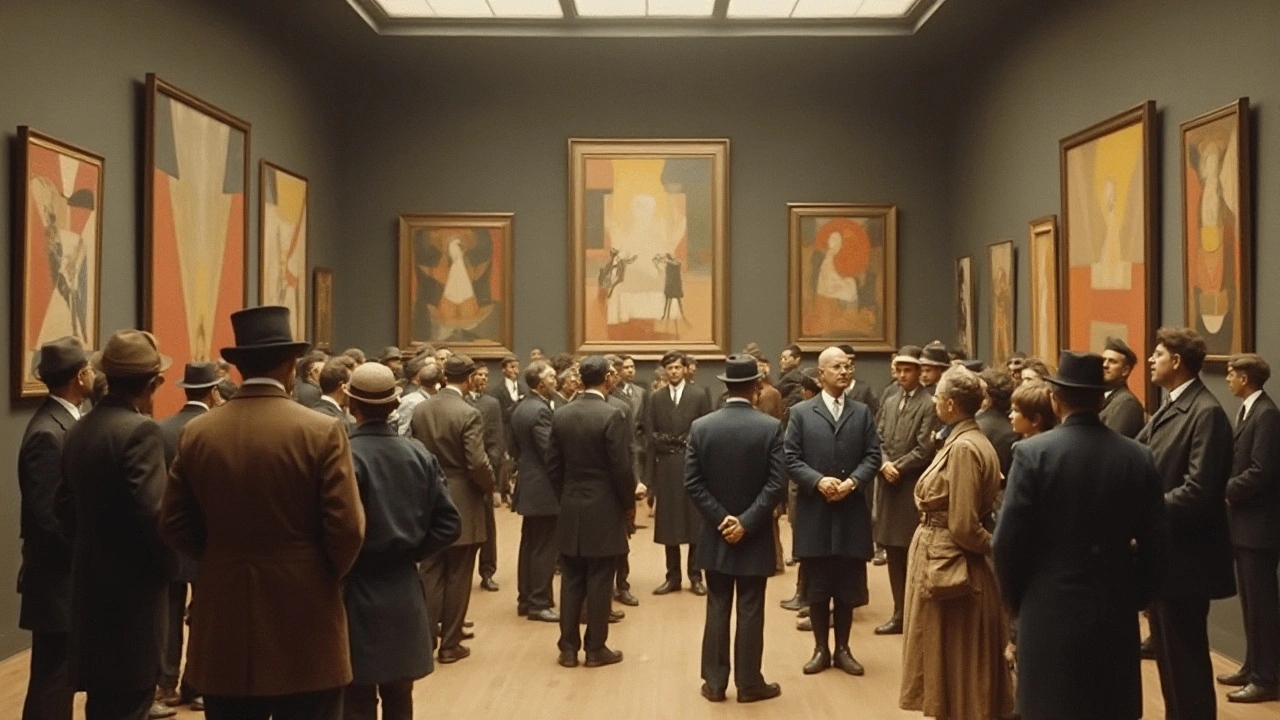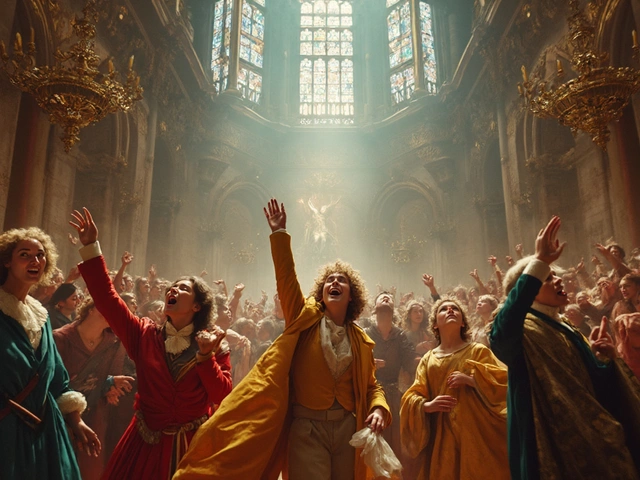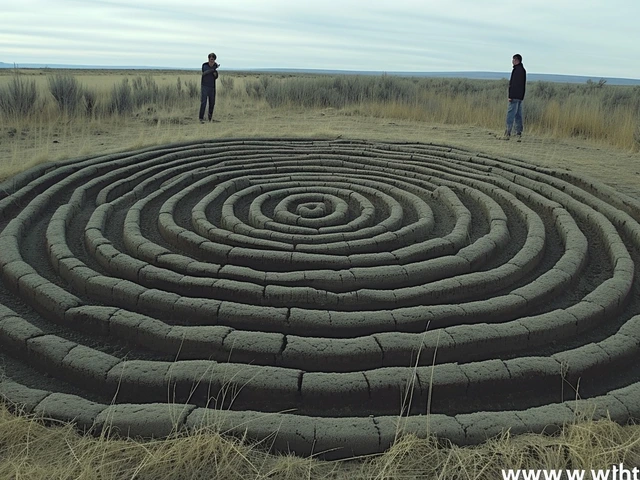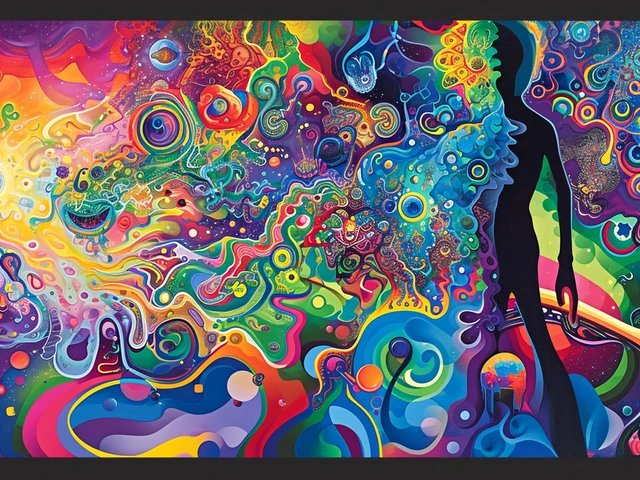In the early 20th century, a bold and intriguing art movement took root. Suprematism, which burst onto the scene under the vision of Kazimir Malevich, was centered around the idea of prioritizing basic geometric forms. This movement sought to evoke pure emotion through its artwork, steering clear of realism and diving deep into abstraction.
This article explores how Suprematism started, its philosophical underpinnings, and its impact on the modern art scene. Understanding how Malevich and his contemporaries crafted this influential movement is essential to grasping its place in the art world today.
- Birth of Suprematism
- Philosophy and Techniques
- Kazimir Malevich's Influence
- Impact on Modern Art
- Legacy in Contemporary Works
Birth of Suprematism
The advent of Suprematism marked a pivotal moment in the evolution of modern art, spearheaded by the vision of Kazimir Malevich, a Russian painter and theoretician. His journey towards founding this movement was deeply intertwined with the cultural and political upheaval of pre-revolutionary Russia. Malevich's landmark painting, "Black Square," which he presented in 1915 at the 'Last Futurist Exhibition of Paintings 0,10' in Petrograd, served as a radical departure from the traditional and figurative art forms. The painting stunned the art world with its stark simplicity — a mere black square on a white background — and it symbolized the birth of a new artistic paradigm focused entirely on abstract form and emotion. Its significance was immediate, as it encapsulated an uncompromising leap towards abstraction, redefining the boundaries of artistic expression during a time fraught with change.
The roots of Suprematism can be traced back to Malevich's engagement with various avant-garde movements, including Cubism and Futurism. However, he distanced Suprematism from these influences, deeming them insufficient in their representation of the "supremacy of pure artistic feeling." This shift away from depicting the visual world towards an art form centered on geometric forms like squares, circles, and crosses, was revolutionary. It was a pursuit of purity and transcendence in form that mirrored the aspirations of modern society, which was experiencing unprecedented technological and scientific advances. Malevich believed that the conventional representation of objects became obsolete in communicating the new spiritual and intellectual aspirations of humanity. It is no wonder that Suprematism resonated with the avant-garde artists of the time, aligning with parallel movements that sought to strip down art to its emotional core, rebelling against representational art's constraints.
"By Suprematism, I mean the supremacy of pure feeling in creative art. To the Suprematist, the visual phenomena of the objective world, in themselves, are meaningless; the significant thing is feeling." – Kazimir Malevich
As Suprematism gained momentum, it began to influence various artists and extended beyond the boundaries of Russia. Its geometric abstraction resonated with an international audience, reinforcing its place in the context of a burgeoning global artistic community. During this time, the movement spread its influence into architecture, design, and theater, creating ripples across various facets of creative expression. Malevich's notion of the autonomous power of color, line, and form was a rallying cry for artists seeking new ways to engage with the world. His teachings emphasized the notion that art should exist without any attachment to the physicality of objects, free from any socio-political narratives that dominated other contemporary art and provided artists with an unprecedented artistic playground for experimentation.
The era in which Suprematism emerged was defined by dramatic transformations, both culturally and politically. With World War I, the Russian Revolution, and the subsequent societal shifts, Malevich presented his vision of art free from societal constraints and representative of a new world order. The movement was not merely an artistic endeavor but rather a philosophical stance that aimed to reflect and influence the new consciousness of the time. It encouraged artisans to capture the unseen and to penetrate the layers representing the deeper truths of human emotion and existence, unencumbered by the external world's chaos. Malevich's influence, through his bold works and radical ideas, laid the groundwork for subsequent modern art movements, continuously inspiring future generations to embrace abstraction and innovation.
Philosophy and Techniques
Suprematism is more than mere geometric forms floating in a void; it marks an ideological leap to express art's essence through a minimalistic approach. It emerged as an answer to the era's cluttered artistic expressions. At its core, Suprematism is about peeling back the layers of objectiveness to get to the pure emotion underneath. Kazimir Malevich conceived this movement to liberate art from the shackles of representation to focus entirely on the basic elements like circles, squares, and rectangles. His aspiration was to evoke feeling rather than depict objects. Suprematists aimed to free creative expression from the limitations imposed by nature and realism, transporting viewers into a realm of spiritual purity, free from the world's influence.
Malevich's ideas took root from his belief that art's purpose is not to merely function as a mirror to reality but to transcend it, reaching into imaginary and conceptual territories. This philosophy comes to life in works such as his seminal piece, the Black Square, which was displayed like a holy icon. It wasn't just minimalism for minimalism's sake; rather, it symbolized a beginning point where art reconstructs itself from the ground up. Malevich once articulated this when he said,
"I have established the semicolon in painting. Suprematism is the semicolon."His views redefined the abstract art landscape, encouraging an era of experimentation and reimagining.
The techniques of Suprematism revolve around the use of simplified color palettes and basic geometry. Artists engaged in this style adopted flatness in perspective, often doing away with the illusion of depth to place importance on form as an entity in its own right. These techniques facilitated an entry point into the metaphysical, abstract journey that Malevich proposed. The use of stark contrasts and bold colors served not to replicate nature but to express ideas and emotions without the intervention of visual distraction irrelevant to the message at hand. By utilizing simple shapes overlapping or individual, the Suprematists pursued the distorted spatial perceptions, creating bold yet contemplative visual experiences.
Engagements with modern art movements like Cubism and Futurism predated Suprematism, and yet they coincided sharing a revolutionary zeal but parted ways on execution and purpose. Where such predecessors persisted in reflecting reality, albeit fragmented or dynamic, Suprematism took an unprecedented dive into the unchartable. This took the art realm into spaces unbounded by familiar form, yet paradoxically, using simple forms. This transformation was part of a larger cultural and social upheaval occurring in Russia during the same period, as artists, like other thinkers, probed the limits of human expression in the light of rapid change, steered by modernization.
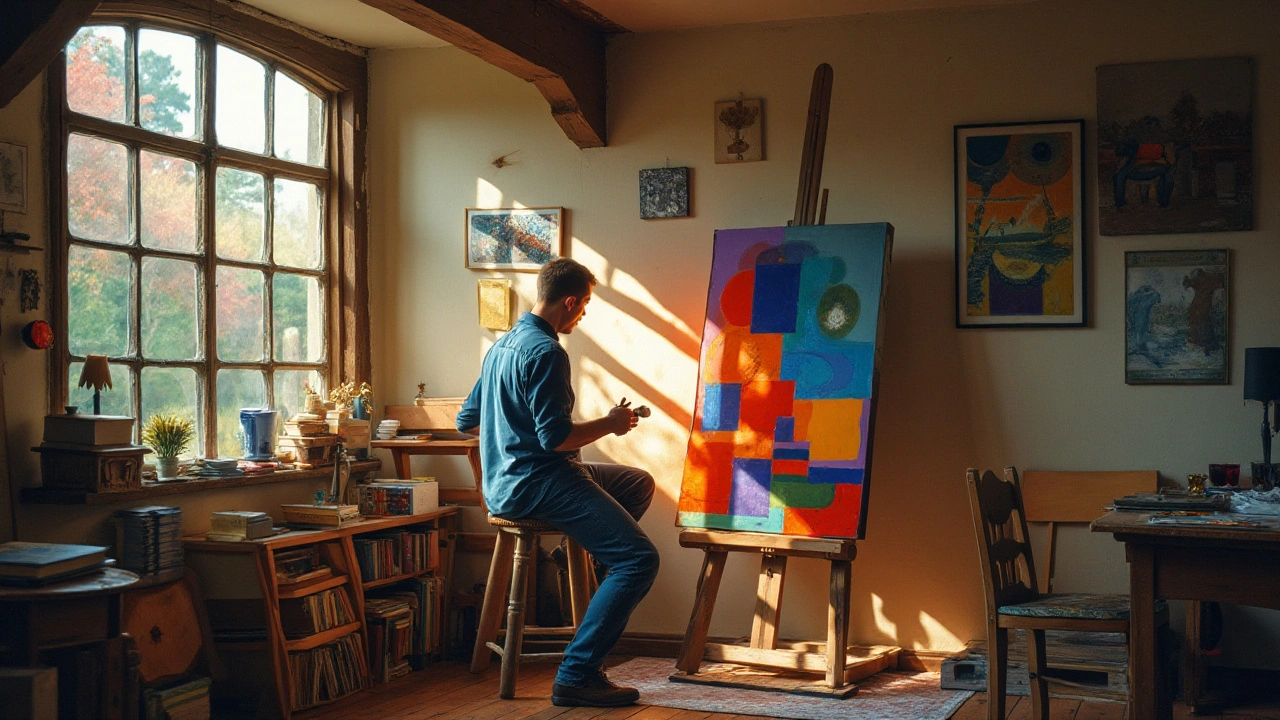
Kazimir Malevich's Influence
Kazimir Malevich, a name synonymous with bold experimentation and revolutionary ideas, left an indelible mark on the art world. Born in 1879 in Kyiv, Ukraine, Malevich became a pioneer of the new artistic language that would be known as Suprematism. His work shifted away from the traditional perspective of art focused on objects, landscapes, and the human form, moving towards the realm of abstract art. In 1915, Malevich showcased his approach publicly with an exhibition titled “0.10” in Petrograd (now Saint Petersburg), where he famously presented the "Black Square," a painting that epitomized the Suprematist doctrine.
Malevich’s ideology was driven by the belief that art could achieve pure sensation and emotional experience through minimalistic forms, leaving material representation behind. He believed that the true essence of modern art lay in its ability to reduce visual language to its simplest elements: lines, shapes, and colors. These ideas resonated with many artists of the time who were searching for new ways to express the rapidly changing world. Malevich’s influence extended beyond those immediate years, as his works and thoughts paved the way for various forms of abstract art that followed. His teachings inspired a generation of artists to break free from traditional narratives.
According to the esteemed art critic and historian John Berger, Malevich once articulated, "In the contemplation of art's true mission, I felt I was on a vast battlefield, paving the way to a freedom of mystical origin." This ethos carried Malevich’s ideas beyond Russia’s borders, resonating with European and American avant-garde artists. His commitment to freeing art from the depiction of tangible reality opened a remarkable dialogue across continents. As this dialogue grew, the seeds of influence sown by Malevich became increasingly apparent in the diversifying scope of world art.
The legacy of Malevich reaches into the roots of many art movements, including Constructivism and De Stijl. His adventurous spirit and radical ideas encouraged artists to explore non-objective compositions and played a role in shaping the landscape of abstract art as we know it today. Even amidst the ever-changing dynamics of 20th-century art, Malevich’s abstract art principles remained steadfast anchors in the storm of cultural metamorphosis. His insistence on purity and emotion in art is a valued beacon for those delving into artistic expression, making him a linchpin of modernist innovation.
Impact on Modern Art
Suprematism's impact on modern art is immense, given its radical departure from the representational art forms of the past. By stripping art down to the fundamental geometric shapes like circles, squares, and lines, this movement set a new trajectory for abstract art. The foundation laid by Kazimir Malevich wasn't just about form; it was about communicating a pure artistic feeling that transcended objects and landscapes. This intention resonated widely, pushing other artists and movements to explore the non-representational.
Artists influenced by Suprematism sought to incorporate its foundational tenets into their own work, testifying to the movement's enduring legacy. The Bauhaus was one such entity profoundly influenced by Suprematist ideas, using its abstract principles to inform architectural design, painting, and even musical composition. Wassily Kandinsky and Piet Mondrian, both pivotal figures in modern art, were also directly influenced by Suprematism’s emphasis on abstraction and emotional purity.
The movement's influence extended beyond individual artists and movements; it found its way into the broader architectural, design, and educational methodologies of the 20th century. Art schools around the world began to embrace the idea that art could be non-representational, fostering new generations of artists who valued expression and innovation. A move from classical realism to a pursuit for abstraction can be seen in the teachings and curriculum developments spurred by Suprematism's philosophies.
Beyond the world of fine art, Suprematism left its mark on mass-produced design. The clarity and simplicity of geometric forms have proved timeless, echoing Malevich's ideas in everything from corporate logos to urban architecture. This approach to minimalist design emphasizing function and form can be traced back to the Suprematist ethos. It’s truly enlightening how a movement initially rooted in painting evolved to influence fields far from its origins.
"We always begin again from the beginning," said Kazimir Malevich, articulating the Suprematist philosophy of art shedding symbolic burdens in favor of abstract purity.
As the years passed, many artists sought to explore the connections between Suprematism and other forms, leading to evolutions in abstract expressionism and even influencing modern digital art. With technology blurring the lines between real and virtual, the principles of Suprematism continue to inspire new iterations of art focused on emotions and non-representational form.
Today, when exploring works from varied art forms, it is not uncommon to see the ghosts of Suprematism influencing everything that touches on minimalism, abstraction, and beyond. Whether directly or indirectly, the movement's drive to distill art to its core continues to reverberate throughout many modern expressions, underscoring its importance as a dynamic force in the history of art.
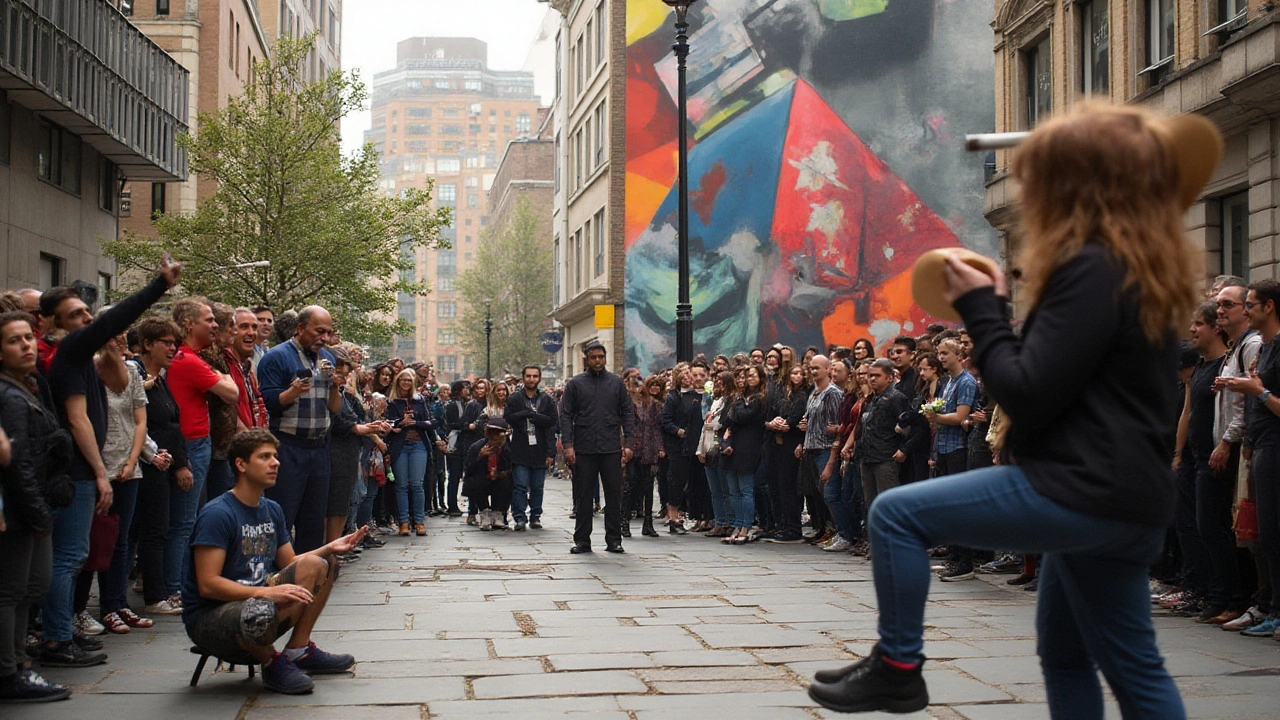
Legacy in Contemporary Works
The echoes of Suprematism resonate powerfully even in today's vibrant art world, revealing how deeply the foundations laid by Kazimir Malevich have seeped into contemporary aesthetics. His bold emphasis on geometry and abstraction continues to influence a spectrum of modern artists who seek to explore and express a pure realm of emotion untethered by representational constraints. This drive for a new abstraction is perhaps seen most starkly in the works of minimalist and conceptual artists, who embrace the stark simplicity of lines, shapes, and colors reminiscent of Malevich’s visions.
Despite its origins over a century ago, the Suprematist movement remains a relevant and inspiring force. Many artists and sculptors find themselves drawn to its basic tenets, adopting techniques that strip artistic expression down to fundamental forms. This movement has not only found refuge in the traditional canvases but has also inspired digital artwork, where pixels become the new canvas for creating the ethereal feelings that Suprematism originally sought to evoke.
“The artist must train not only his eye but also his soul.” - Wassily Kandinsky
The digital arena has provided a new playground for the ideals of Suprematism to flourish, enabling artists to take Malevich’s conceptual style into new dimensions. Through advancements in technology, vibrant digital landscapes emerge, echoing the clean lines and dynamic compositions found in Suprematist art. Artists like Ellsworth Kelly and Donald Judd, though sometimes categorized under minimalism, share the Suprematist vision of prioritizing form and color as the core elements of their exploration.
In an age dominated by visual media, understanding the impact of Suprematism offers essential insights into the evolution of visual languages. A recent survey revealed that over 65% of contemporary programmers who dabble in visual digital content were inspired by abstract art movements like Suprematism, pointing to its enduring appeal in shaping cultural and digital landscapes.
In addition to digital art, influences of Suprematism can also be seen in architecture. The clean lines and simple forms of modern architectural design owe a debt to the Suprematist philosophy. Architects explore new geometries and abstract forms within urban environments, creating spaces that evoke emotion through structural simplicity, much like a Suprematist painting. This architectural influence solidifies Suprematism not just as an art movement, but as a broader cultural revolution that reshaped artistic expression in multiple facets of human creativity.

